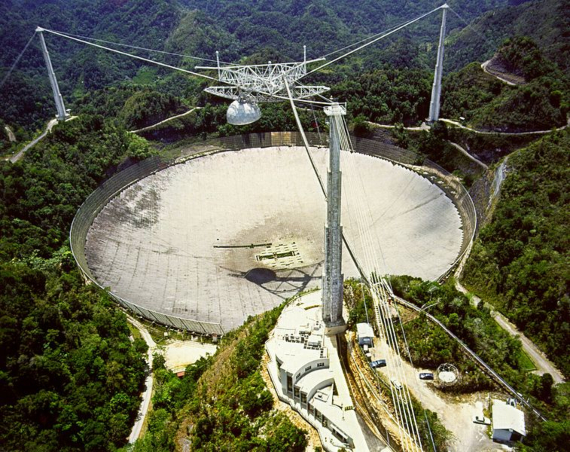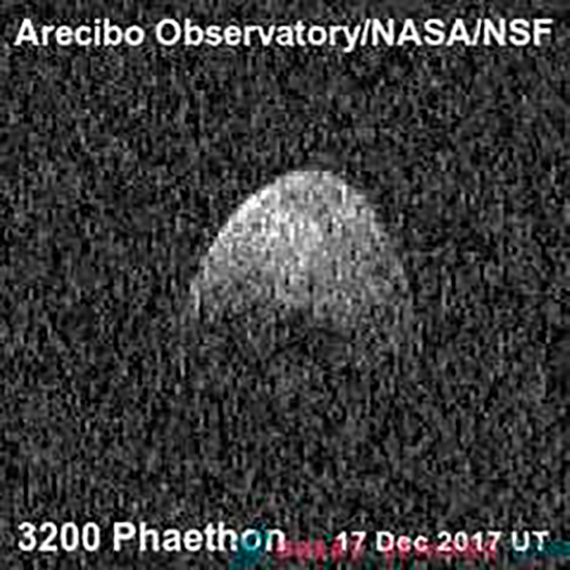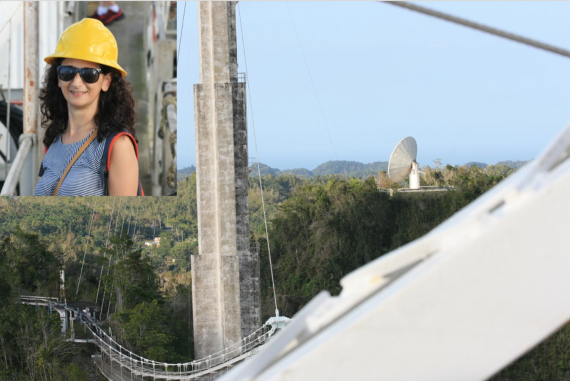A deep shock was felt by the world of science earlier this month with the collapse of the giant radio telescope in Arecibo, Puerto Rico. An installation that had opened up new windows to outer space and whose importance transcended the field of astronomy. Thanks in part to Carl Sagan‘s novel Contact, it became firmly established in the collective imagination and forms part of contemporary popular culture, in addition to having inspired many careers in scientific research.
Why was it such a potent symbol of science? Are these types of scientific macro-facilities sustainable? Why did it collapse? Could it havebeen saved? Is it worth rebuilding? We seek answers from the scientists who have worked on the Arecibo telescope.
The collapse began last November, when one of the auxiliary cables broke. Almost immediately the maintenance teams began to work on its repair. On the morning of Tuesday, 1 December, while a drone was capturing images of the damaged cable strands and the engineers were evaluating how to stabilise the structure, it suddenly gave way—with the inevitable collapse of the 900-ton platform onto the dish, destroying the entire astronomical instrument.
Maintenance, knowledge or one-two punch of natural disasters
The funding cuts by the US National Science Foundation (NSF) were quickly named as one of the causes of the collapse. That link was hinted at by specialised blogs and even by Daniel Altschuler, former director of the observatory. However, if we get closer to Arecibo and dig a little deeper, other opinions emerge. “The radio telescope was perfectly maintained. It was stopped once a week and everything was checked and adjusted. What’s more, to confirm a lack of maintenance would require very conclusive tests,” asserts Abel Méndez, director of the Planetary Habitability Laboratory at the University of Puerto Rico.
Nor does it seem that there was a lack of knowledge about a facility built by another generation of scientists. “We hold conferences with former operators and new ones to discuss the state of the telescope and its future, and in this way knowledge is maintained at the installation,” confirms Noemi Pinilla, Doctor of Astrophysics and Scientific Director of the Arecibo complex, which forms part of the University of Central Florida.
“What happened in Arecibo was Hurricane Maria in 2017 and in January of this year an earthquake of 6.4 on the Richter scale. The hurricane of the century and the earthquake of the century is probably what is behind the structural failure,” says Abel Méndez.
In the coming months, the reasons behind the failure will be studied and it will be determined whether there was a connection to the maintenance or whether it was the one-two punch of natural disasters that weakened the resilience of the structure. In any case, this is not the first time that a radio telescope has collapsed unexpectedly. In 1988, a 100-metre mobile antenna collapsed at the Green Bank observatory while operating normally. As in other aspects of life, radio telescopes seem not to be exempt from fatal accidents.
A ‘MONUMENT’ TO ASTRONOMY
“The radio telescope is embedded within a crater on a high point and, as you climb up, you don’t see anything of the installation. Once you enter the buildings you have access to a terrace from where, suddenly, you encounter the big dish. When people arrive for the first time, there is always silence—the sight of the radio telescope is breathtaking,” explains Noemi Pinilla. Her description helps us to appreciate how overwhelming the view of this astronomical instrument could be in person.

The antenna is a giant semi-sphere with a diameter of 305 metres (about the length of three football pitches) on which you can see a huge metal platform of instruments suspended about 150 metres above the centre of the disk by three strands of cables. It was built in the early 1960s to concentrate radio waves in order to amplify very weak signals and study them in great detail. The larger the antenna, the more sensitive it is, hence its enormous size. The word “radio” may evoke the idea of artificial transmissions; however, many astronomical objects naturally emit radio signals—which aid us in understanding what they look like and how they evolve—and this is what was used at Arecibo to investigate planets, asteroids, pulsars, galaxies and also the Earth’s atmosphere, especially the ionosphere.
A LOT OF SCIENCE AND MANY SCIENTISTS HAVE COME OUT OF THIS OBSERVATORY
The list of the observatory’s achievements in its 58-year history is long. “376 doctorates, more than 3,000 articles and even a Nobel Prize winner have come out of Arecibo,” Pinilla notes. In 1974 the first binary pulsar was discovered there, which ended in a Nobel Prize for Hulse and Taylor; in 1992 the first exoplanet was found, orbiting the pulsar PSR 1257+12; and before that, in its early days in the 1960s, it was able to reveal the first images of the surface of Venus with its powerful radar. These were achievements that at the time were only within the range of a colossal radio telescope.
Among its latest achievements, Pinilla highlights “the use of radar to reveal Comet Borisov (an object that visited the solar system from interstellar space) and the analysis of molecules from Comet NEOWISE, which was spectacularly seen in 2019.

Arecibo doesn’t just generate research papers; the radio telescope has also produced many scientists. “As a child I went on a school visit. The scientist who was showing it that day allowed us to go under the dish, which is very rare. This was a defining moment for my career as a scientist,” confesses Abel Méndez. Without a doubt, Arecibo has for decades been an icon of science for children and students, who see it in books, documentaries or films and are drawn to astronomy as a result.
THERE IS NONE OTHER LIKE IT
The recent inauguration of the Chinese FAST radio telescope, the largest in the world with its diameter of 500 metres, might lead one to think that Arecibo won’t be missed. “However, FAST cannot use its entire surface at once. In operation it’s only a few metres larger than Arecibo and it also has different operating frequencies,” notes Pinilla. “An instrument is lost, which means less observation, less science,” adds Mendez. Both Pinilla and Mendez agree that the ability to transmit makes Arecibo unique and without substitute. This is a feature that neither FAST nor any other facility in the world has, at least not with that power.
When a potentially dangerous asteroid is detected, the powerful Arecibo radar was able to send a microwave pulse and then receive back data about the shape of the object, its surface and—more importantly—information about its rotation and speed. This data is essential for predicting the path of asteroids orbiting close to the Earth and assessing whether any of them could be threatening. This is not science fiction. The question is not if but rather when an asteroid will one day collide with the Earth, like the impact that wiped out the dinosaurs. With Arecibo out of commission, one of the Earth’s principal means of planetary defence, helping us to predict and respond to that question, has been lost.
A NEW HOPE
“Arecibo is not dead; we have a lot of stored data that we are still processing and from which we can learn a lot through big data techniques. Some of it has been on magnetic tape for decades,” says Pinilla, “and the research complex will remain active, as we have a new 12-metre radio telescope that has not been used but is operational.” In light of the news that NSF funding for the reconstruction has been cancelled, Pinilla makes it clear: “We need to think quickly and deeply, to begin work on rebuilding not the original radio telescope, but a better one.”

At this moment, public support is key, as it has been at other times when the observatory’s budget has been cut. This facility has proven its scientific worth for more than half a century and so far there is no commitment to fund its reconstruction. With the slogan “Save Arecibo” it is possible to access the campaign to support the rebuilding, which among many actions is also gathering petitions to send to the White House. Right now, saving Arecibo may seem of little importance, but it would be in all of our interests because one day in the future a new radio telescope might just save us.
Borja Tosar
Comments on this publication